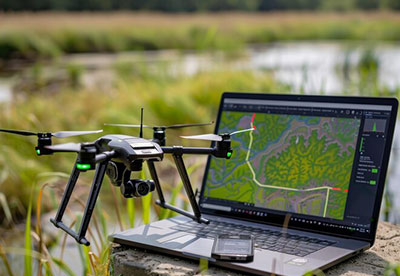Have you ever felt frustrated when your computer or server suddenly behaves differently without any intentional changes being made?
We all have come across this situation and this mysterious occurrence is the result of configuration drift. At this you must have several questions popping into your mind, what is configuration drift? What are the risks associated with it? Or how can we prevent configuration drift?
Hold your horses! In this blog, you are going to find all the answers to your questions. But first, let’s add a definition to the term.
Configuration drift is the gradual and unplanned changes in the configuration of the IT infrastructure components such as network devices, servers, or software. For instance, an application and its underlying infrastructure require modification sometimes, and during such a process, the application’s configuration and infrastructure can change. This is the case of drift, which can bring several associated risks with this. Let’s witness key issues configuration drift can lead to-
Security Issues
Unauthorized changes to configuration without proper documentation or authorization can create chances for cyberattacks. To protect against these threats, businesses use firewalls. However, if the firewall rule is accidentally changed it can lead to unauthorized access to sensitive data, resulting in data breaches, malware issues, and other security breaches. This can cause confidentiality issues within the system.
Lacking and Degraded Performance
Configuration drift can badly impact the system performance, leading to slower response time or causing system failures. It leads to IT troubleshooting errors that might not have been generated if the network had been in the intended condition. This will drastically reduce productivity, create dissatisfaction among the users, and potentially generate a risk of financial losses for the organization.
Breaking of Compliance
There are certain compliances set by HIPPA (Health Insurance Portability and Accountability Act), and GDPR (General Data Protection Regulation) that businesses must adhere to. But configuration changes cause a system to no longer meet the requirements of such authorities. It may lead to facing penalties or any legal consequences. Therefore, businesses need to maintain strict control over their network configurations to avoid any potential repercussions.
Now we have checked the common issues from configuration drift, let’s move forward toward the measures for configuration drift management–
Adoption of Configuration Drift Management Tools
Configuration drift management tools frequently scan your systems to identify configurations that have drifted from their defined state. As different tools have different features their capabilities also differ. Tools such as Data Dog, AWS Config, Tripwire Enterprise, and so on. By implementing these tools, organizations can proactively identify and rectify configuration inconsistencies, ensuring the stability and security of their systems.
Adopt Infrastructure as Code
Adopting Infrastructure as a Code allows for automation of infrastructure and configuration, reducing the likelihood of drift occurring due to manual configuration changes. With an immutable infrastructure, one cannot make changes once it’s deployed. This approach reduces the risk of drift and various tools like Terraform, packer, AWS CloudFormation, and Docker can be used for this purpose.
Version Control
To maintain the historical record of all the configurations, version control helps in tracking changes made. Version control systems like Git provide a history of all the changes made, making it convenient to easily identify changes and rectify drift. Additionally, with GitOps tools, it can find the difference between the current and the desired state, and the system can flag any discrepancies as “out of sync”, thus preventing configuration drift.
Documenting all changes
To track the configuration better it’s important to document all changes, including the reasons for the changes. Collaboration here plays a significant role in ensuring that everyone is aware of the changes to ensure efficient configuration management. Thus, what matters is continuously monitoring it, detecting it early, finding the best preventive measures, and documenting it properly.
Summing Up
Configuration drift can be the outcome for various reasons including software updates, manual changes, and unauthorized modifications. Monitoring configuration drift is sometimes considered an underlying concern, but it has broader implications for protecting from cyber-attacks and boosting the performance and operational efficiency of IT Systems.
At Canopus Infosystems, we understand the significance of cybersecurity and the importance of having a reliable partner to manage configuration drift. Our team of expert developers ensures that all configuration management measures are followed while delivering an application. With our comprehensive application services, we prioritize security and compliance, helping you mitigate risks associated with configuration drift while enhancing the overall performance and operational efficiency of your IT systems
3 mins read


















